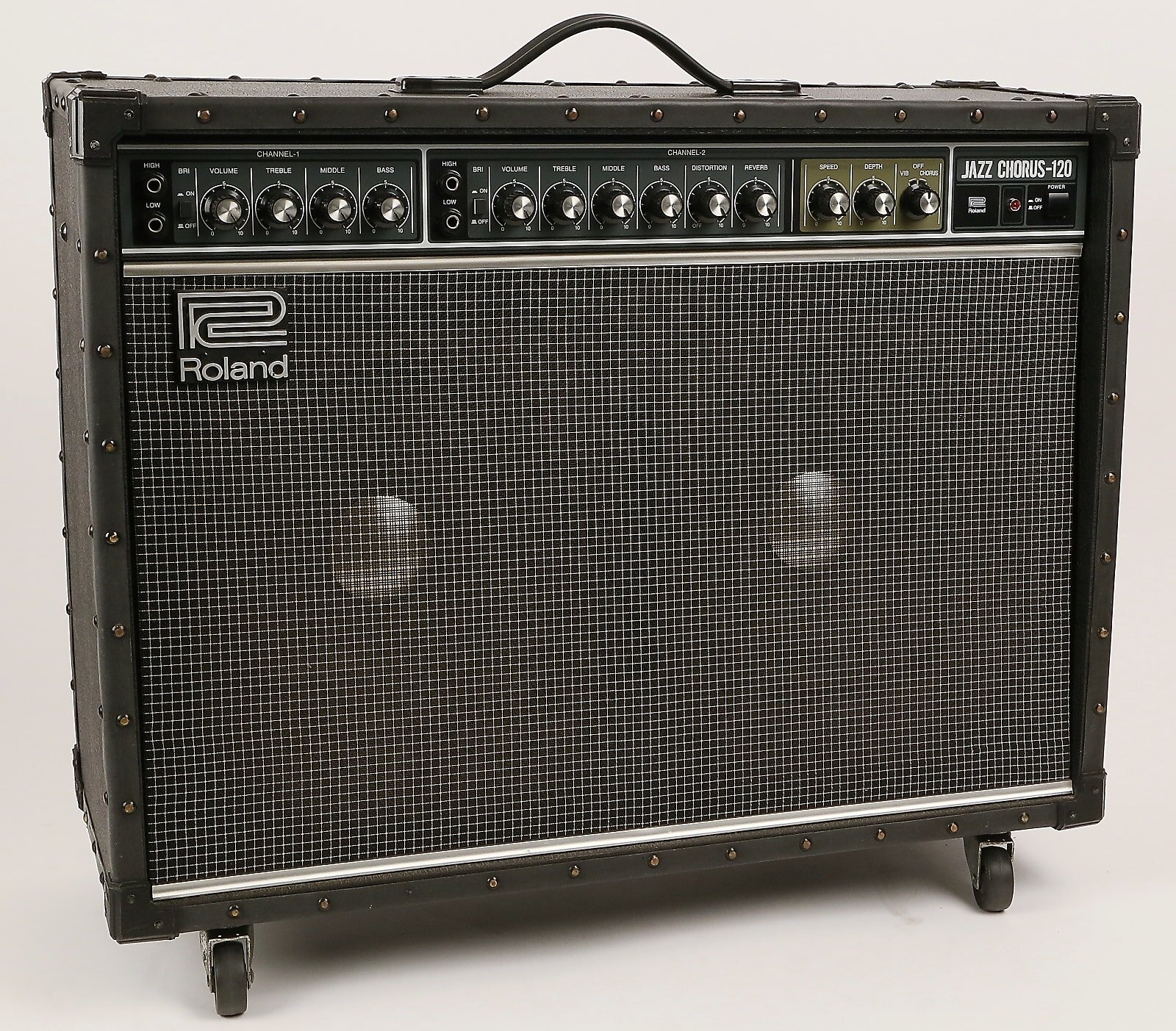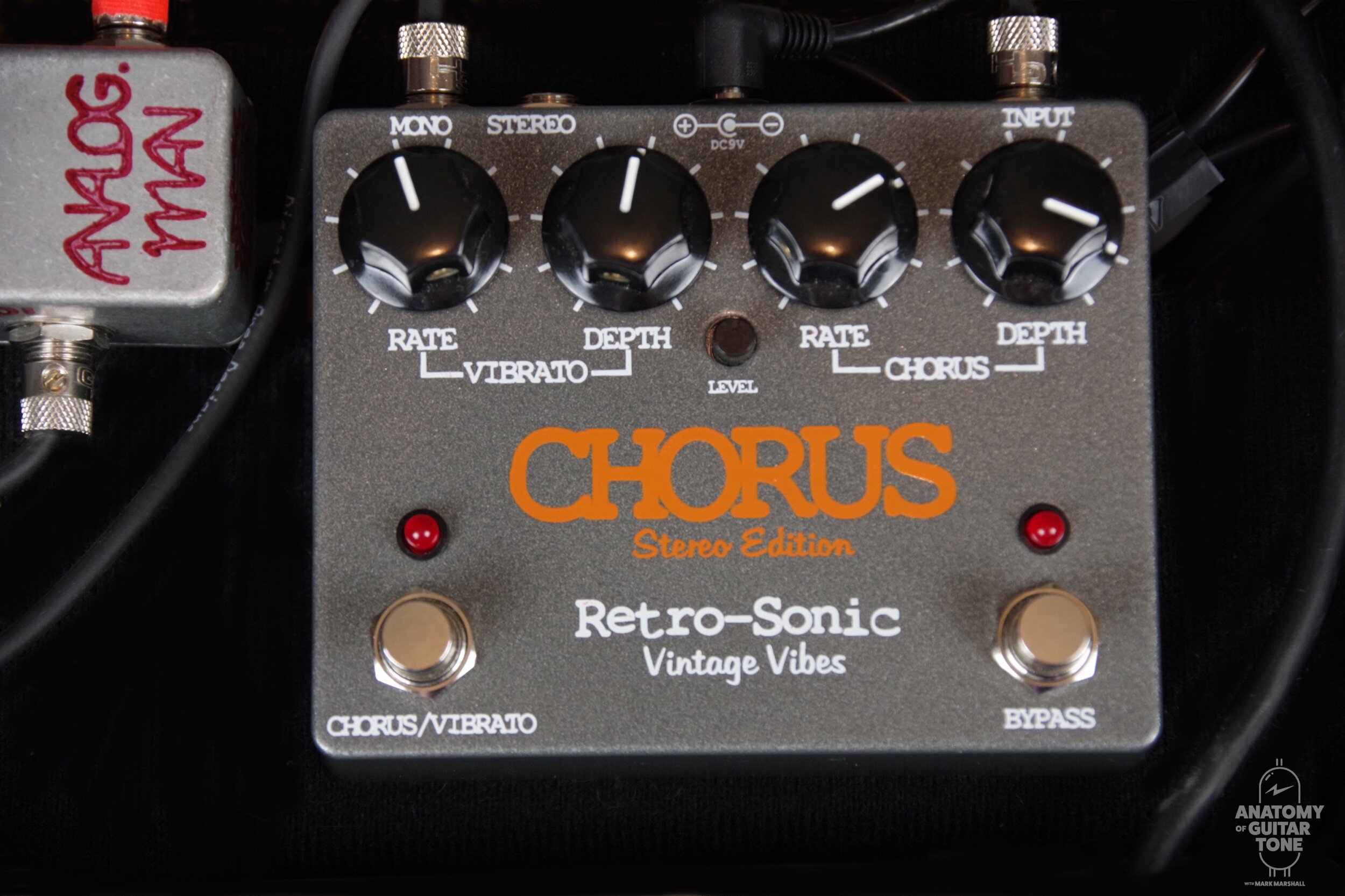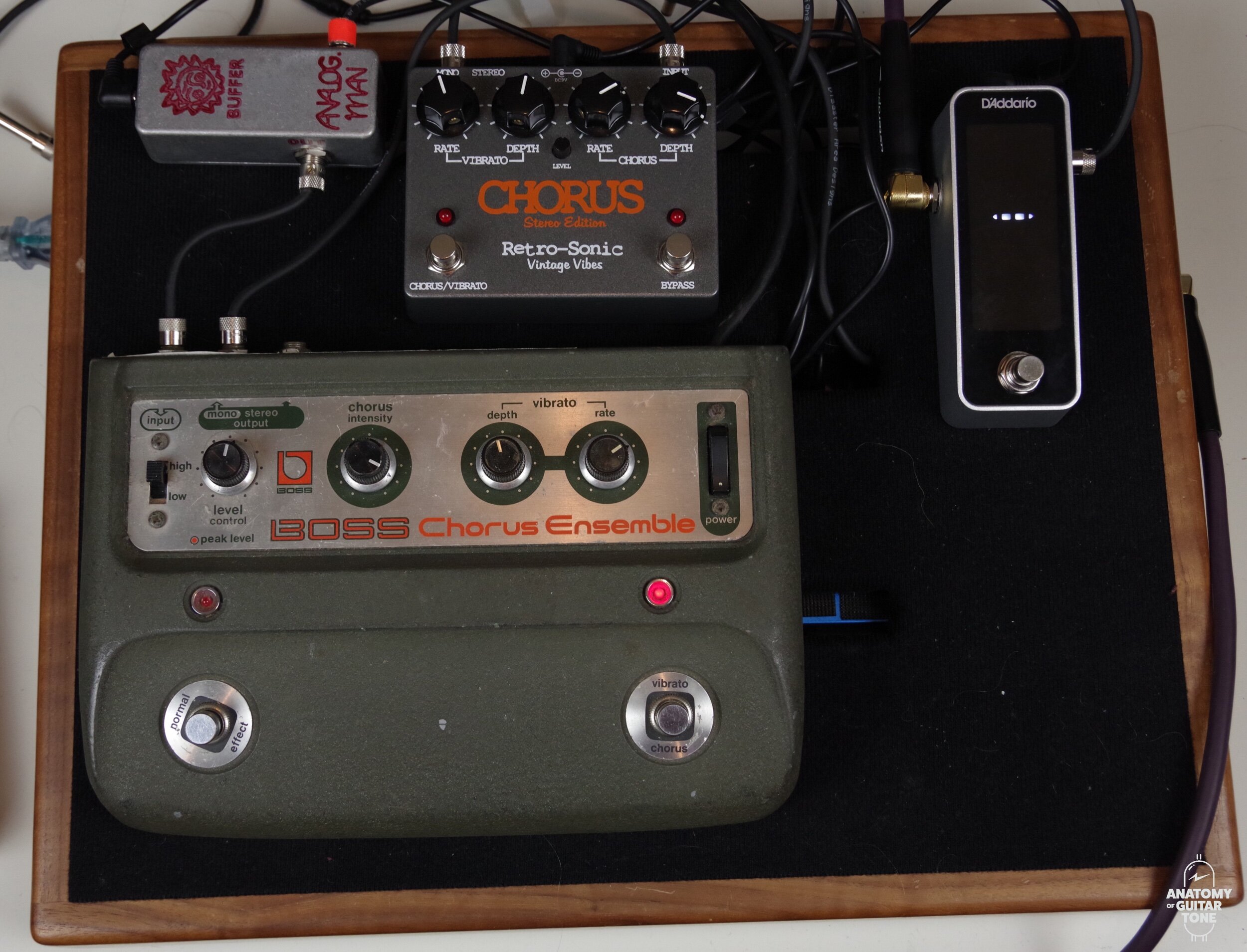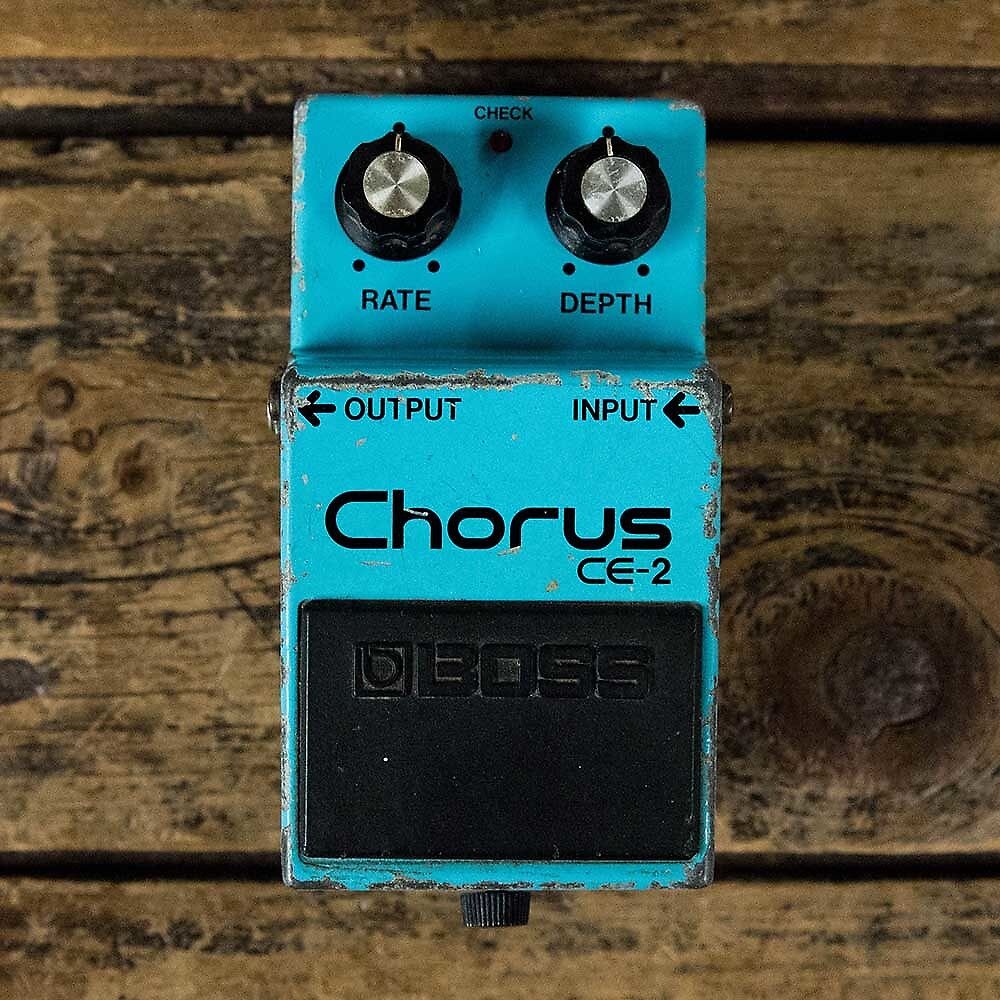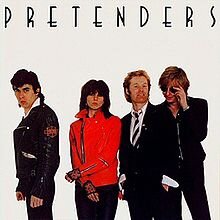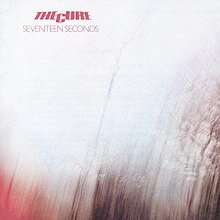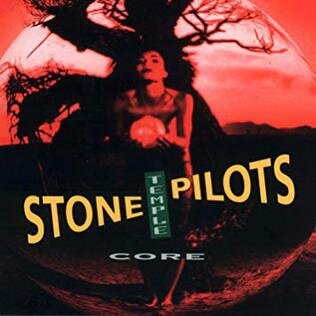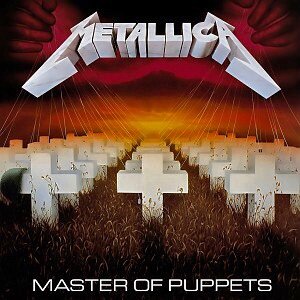Retro Sonic Chorus CE-1 Circuit
It would be fair to say that in certain periods of music history, both past and present, chorus has been one of the most popular guitar effects.
Chorus is most notably associated with the 1980s but really got its start back in the 1960s. The Beatles were the first to use ADT (artificial double tracking), which to the ear sounds like a light chorus or doubling effect, on “Rubber Soul.”
In fact, chorus is meant to sound like more than one source playing at once. Like a chorus of singers. It’s an electronic way of doubling your guitar or any other instrument.
There are several ways to achieve this artificial doubling. The Beatles used tape machines. By 1976 a pedal had actually been invented to create a chorus effect: the Boss CE-1 chorus pedal. CE was short for Chorus Ensemble.
The CE-1 used the same bucket brigade chips as the Roland Jazz Chorus JC-120 amp, the first amp to include chorus. And the Boss CE-1 was the first pedal to be released from Roland’s new pedal company, Boss. The Boss CE-1 pedal used the same chorus and vibrato circuit as the Roland Jazz Chorus.
Roland and Boss were also the first to use the MN3002 BBD chip, which later went on to be a favorite for analog delays.
New frontiers
The release of chorus in a pedal meant guitarists (and bassists, keyboardists) could replicate that studio doubling sound live.
The Boss CE-1 was a rather large pedal by today’s standards. Despite its size, the original CE-1 circuit had a warmth and particular sweep that was never really emulated until now.
Dreams of swirling tone
I happen to really like chorus. I have roots in New Wave music. In my search for chorus pedals I struggled to find one I liked as much as the chorus on my Roland Jazz Chorus. I currently have an original CE-1 on loan. But it’s old and a little inconsistent. It’s also rather large. It sounds really cool, but I don’t think it’s operating at 100% factory specs. I fear fixing it will also take away some of the quirky charm I sometimes desire.
This obviously doesn’t make for a good gigging pedal. And I also wanted the sound of what an original CE-1 sounded like off the shelf.
My search eventually directed me to Retro-Sonic pedals. It turns out they make the original CE-1 circuit. They’re faithful to the original design with very few changes.
“faithful to the original design with very few changes”
I plugged in my Retro-Sonic Chorus within five minutes of receiving it and was instantly enamored. It had the CE-1’s character, which is exactly what you would hope for from that circuit.
I had already tried a stack of other chorus pedals. I was dissatisfied with the TC Electronics Corona and other boutique chorus pedals. My ears are so used to the CE-1 tone from the records I grew up listening to. To say I’m picky about chorus is an understatement.
Build me up buffer cup
One issue with the original Boss CE-1 is that it’s a buffered pedal. The buffer is always in the signal chain. There is no getting around that. Some like this, as they use the original CE-1 as a preamp. I can understand this, as it has quite a specific color.
Personally, I’m not such a fan. Or I might be in certain instances, but I don’t like being married to the buffer. Well, thankfully the Retro-Sonic is true bypass.
Size it up
The Retro-Sonic Chorus is considerably smaller then the original Boss CE-1. It’s much more pedalboard-friendly. It’s less than half the size of an original CE-1. Compact enough to fit on any pedalboard. The CE-1 needed its own movers and side of the stage.
Stereo outs
You can run the Retro-Sonic Chorus in mono or stereo mode. This is useful if you want a really wide stereo spread between two amps.
Gain control
One addition to the Retro-Sonic Chorus not available on the CE-1 is a level adjust knob. This controls the overall sound of the effect. The level adjustment helps to deal with different pickup outputs. Meaning you can compensate if your pickups are too hot or weak.
BBD or bust
Not many chorus pedals use the BBD chip. In fact Boss itself moved away from the BBD chips after the CE-2. Buying a current Boss chorus pedal won’t get you the same tone as the CE-1 or CE-2. Part of that tone is comes from the BBD chip.
Technology progresses. More efficient parts that some consider superior become available . But just like with guitar tubes in amps, pedal electronics of a certain era have a desirable flavor. Delay pedals with bucket brigade chips are coveted by many guitarists for their somewhat lo-fi warmth and character.
There were some limitations with the BBD chips. But those limitations also produced some very special color.
That character just can’t be captured in modelers or modern chorus pedals. One issue is the noise floor.
Old CE-1 pedals were noisier than the Retro-Sonic, which has added noise killer circuitry to eliminate noise generated in the BBD chip. We get the lovely analog tone of the BBD without the hindering noise of the original CE-1.
Split personality
The Retro-Sonic allows you to have two independent channels of chorus and vibrato. You can’t run vibrato and chorus at the same time, but you can switch back and forth between chorus and vibrato with separate settings of speed, depth, and volume.
This wasn’t possible on the original CE-1. You can essentially toggle between a set chorus and vibrato (Leslie), setting which is fantastic!
Artists who used the CE circuit:
James Honeymoon Scott of The Pretenders used a Boss CE-1, a CE-2, and an Electro Harmonix Clone Theory through a Marshall Plexi amp. Check out “Mystery Achievement” and “Tattooed Love Boys.”
Robert Smith of The Cure used a flanger most of the time for his chorus-like tones. But he did use a Roland Jazz Chorus from time to time. He’s playing through one on the song “A Forest.” You can hear a lot of Jazz Chorus on the “Seventeen Seconds” record.
Metallica used Roland Jazz Chorus amps live and in the studio on many records. Check out the songs “Welcome Home Sanitarium,” “One,” and “Nothing Else Matters.”
Dan DeLeo of Stone Temple Pilots used a Boss CE-1 chorus on many STP recordings. Check out “Plush” and “Dead and Bloated.”
Johnny Marr used a Roland Jazz Chorus on The Smith’s first record. Later he used a Boss CE-2 pedal into various Fender amps. Check out “This Charming Man” and “You’ve Got Everything Now.”
I’ve tested with a Vox AC15, Marshall Plexi, Fender Tweed, and Fender Blackface amps. It excels in each of these pairings.
The Retro-Sonic Chorus pedal ticked all the boxes for me. I’ve finally found THE chorus pedal I’ve been looking for.
Let’s listen to some audio examples:


